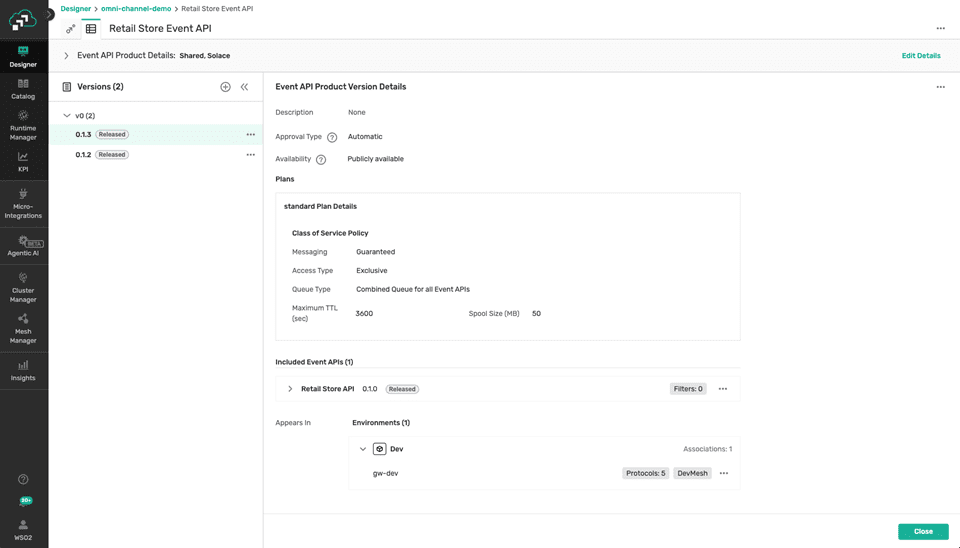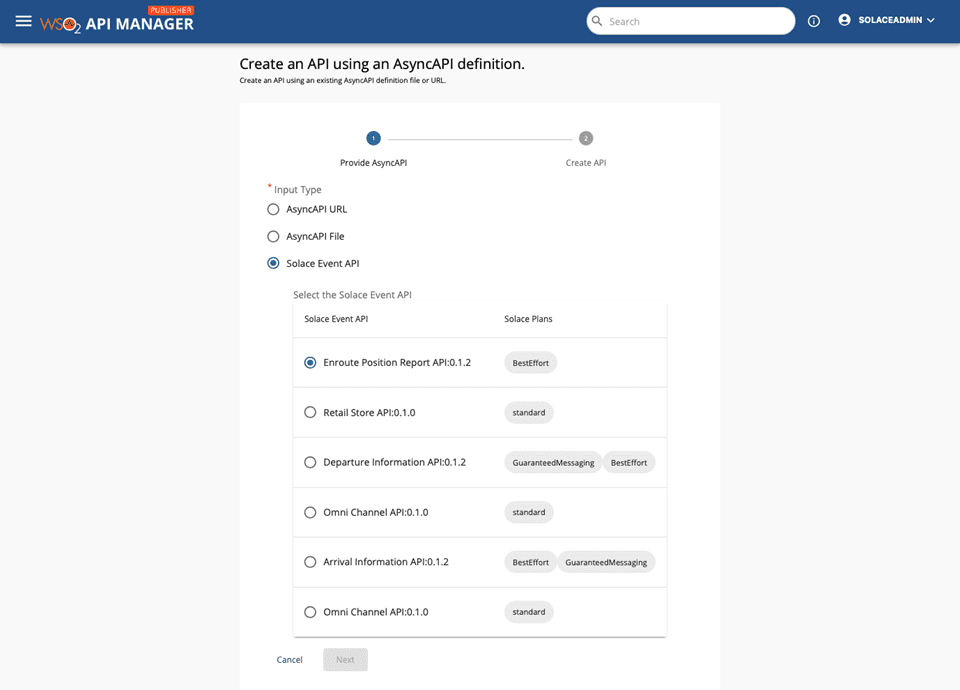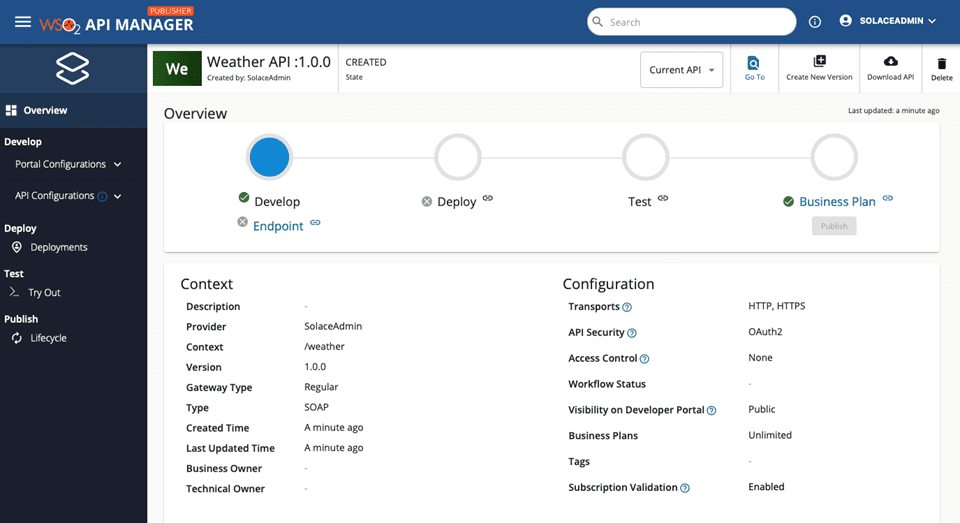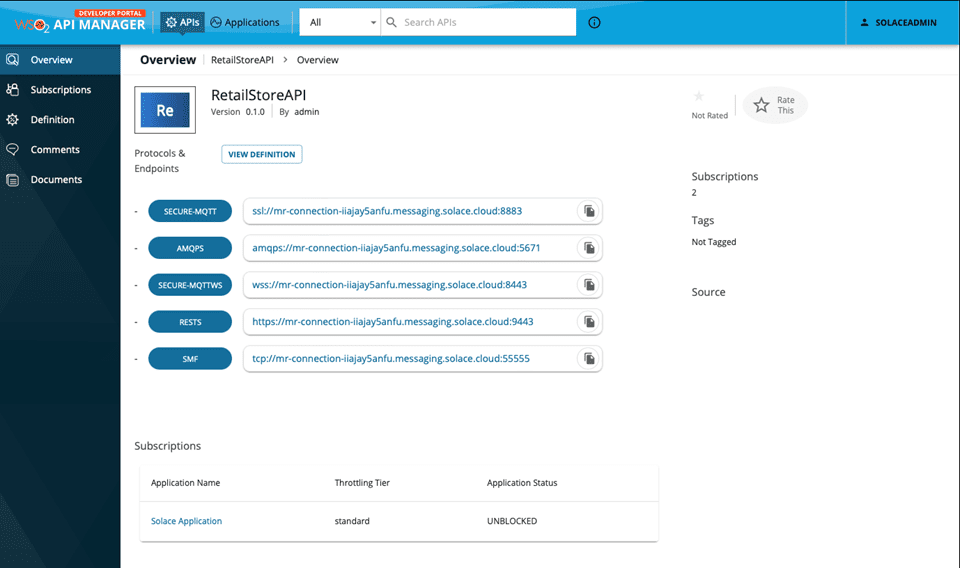Empower developers with self-service access to all your APIs – REST APIs and event APIs – in one place.
As organizations modernize, they need to bridge the gap between legacy systems and modern, event-driven architectures—without sacrificing openness, flexibility, or control…that’s where Solace and WSO2 come in.
Together, we offer a powerful combination: Solace’s platform and WSO2’s open-source API management, integration, and identity capabilities. This partnership empowers you to federate APIs and events, integrate across protocols, and govern your data products with confidence—no vendor lock-in required.
Together, Solace and WSO2 can help you:
- Build and expose Event APIs with open, self-service tooling
- Integrate with legacy systems, protocols, and services
- Avoid vendor lock-in with a fully open, interoperable solution stack
- Enforce governance and security across APIs and events
- Accelerate real-time innovation across your business and ecosystem
What can you do with Solace and WSO2?
Easily include Event APIs into your API Program
WSO2 lets you discover event APIs from the Solace platform easily. You can also create web streaming APIs to augment your REST and Solace Event APIs. Governing the lifecycle of all your API assets in one place.
Simply point your WSO2 API Publisher at Solace and discover available event API products in your Solace Catalog.




